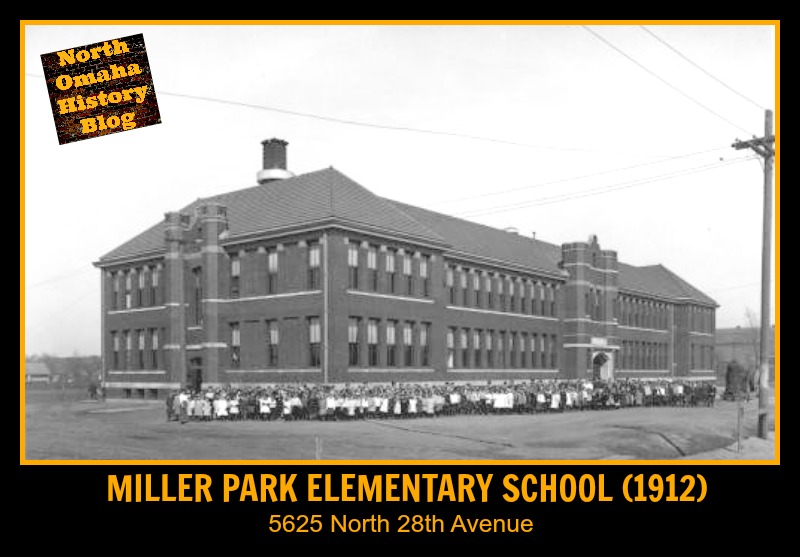By now, many North Omahans are familiar with the grand, wonderful, exuberant and spectacular event know as the Trans-Mississippi Exposition of 1898. However, not many people know that the “event of the century” almost didn’t happen in banker Augustus Kountze’s land centered on 24th and Evans.
In planning for at least three years before it was launched, the Expo committee worked diligently for many months to identify the absolute perfect place to hold the event. Led by early Omaha banker Gurdon Wattles, this committee was stocked with business leaders and other informed by locally important people including David Mercer and William Jennings Bryan.
Starting at the end of 1895, this committee considered five sites, none of which included Kountze Place.
Site 1: East Omaha

The East Omaha site referred to land between Cutoff Lake (Carter Lake) to the south and (the now-gone) Florence Lake to the north. It included almost 1,000 level acres that were dotted with trees and was near a lot of water. Less than three miles north from Omaha’s downtown post office, North 16th Street ran right to the site, and a new bridge across the Missouri River made the site accessible from Iowa. The city of Council Bluffs favored this site.
Site 2: Elmwood Park

At 215 acres, the Elmwood Park site was just over three miles west of the post office. In 1895, the Nebraska state fairgrounds were directly south of the park and would be used. The second largest in H.W.S. Cleveland’s Omaha park designs, it was donated to the city in 1889. Described as a romantic spot with many beautiful elm trees, it was originally 55 acres (today it is over 200 acres). By 1892, scenic roadways were added and a seven acre lake was installed. Early on, the park had a popular mineral spring with magnesia, soda and various other minerals. (It was capped in the 1940s.) Here’s the Omaha Public Library history of Elmwood Park.
Site 3: Riverview Park

The Riverview Park site originally offered 66 acres of very hilly land, along with leases secured for another 300 acres all around the park. It was only two miles from the post office. Eventually the park totaled 111 acres. Here is a nice, short history of the park. Here is the Omaha Public Library’s history of the park.
Site 4: Hanscom Park

Hanscom Park offered 50 acres for the Expo. One of the city’s oldest parks, it was donated in 1872 by A.J. Hanscom and James Megeath. In 1889, H.W.S. Cleveland was hired to landscape the park. Eventually, it had two lakes, a small waterfall, flower beds, fountains and a forest. There were also more than two miles of roads installed. West of the public park, more than 200 additional acres were secured for the Expo. The site was only two miles from the downtown post office, and had paved streets leading to it from all directions. Here is a history of the park from the Omaha Public Library.
Site 5: Miller Park

Miller Park sits on 80 acres that are four miles from the original downtown post office. Two street car lines ran nearly to the park along North 24th and North 30th. There was reportedly no natural water available for the lakes wanted at the Expo, but a large water main ran nearby from the Florence Water Works. Leases were obtained for an additional 400 acres of property to the north of the park, where today’s beautiful Minne Lusa neighborhood sits. There were also plans to use the then-defunct Fort Omaha.
Site 6: The Winner Was… Kountze Park!

We know the Kountze Place site was eventually selected. Turns out, Historical documents say why it was chosen, and why it wasn’t listed among early candidates. A blogger called Omababe wrote a tremendously readable history of the Expo that I recommend.
You Might Like…
MY ARTICLES ABOUT THE TRANS-MISSISSIPPI AND INTERNATIONAL EXPOSITION
GENERAL: Trans-Mississippi and International Exposition | Greater America Exposition | Locating the Expo | Demolishing the Expo
BUILDINGS: Administration Arch | Machinery and Electricity Building | Manufactures Building | Girls and Boys Building | Old Plantation | Sod House | Mines and Mining Building
EVENTS: Congress of White and Colored Americans
RELATED: Lost Monument | Omaha Driving Park | Kountze Park | Kountze Place
BONUS
In the meantime, to help you picture what might have been located elsewhere in North Omaha, here are some pictures from the Expo and Indian Congress. Think about what might have been…






Leave a comment